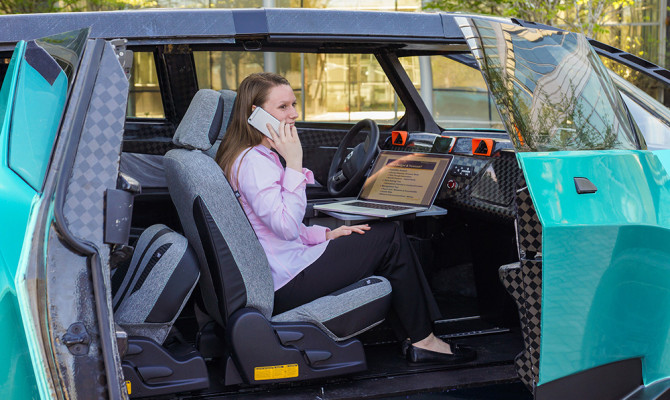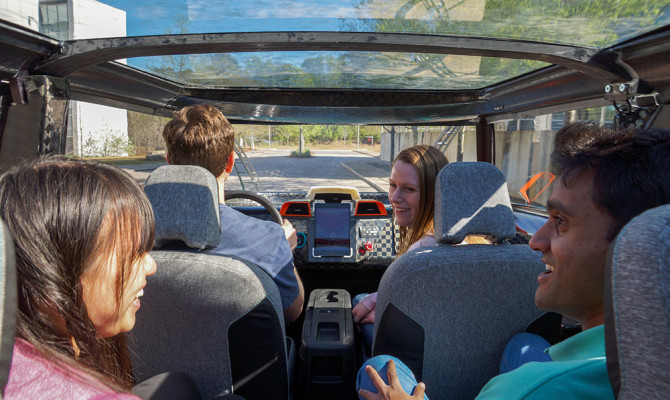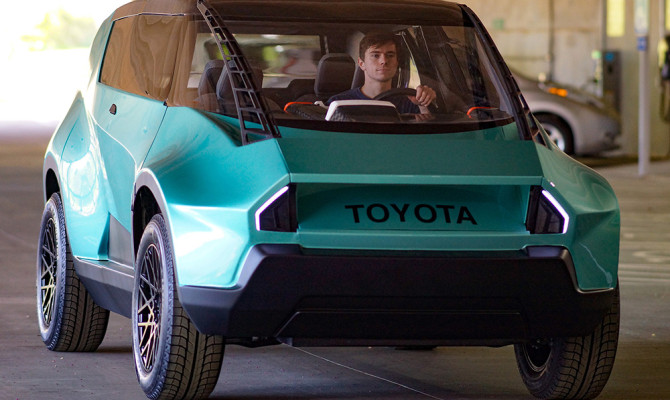Most of Toyota’s North American vehicles are engineered in Southeast Michigan but its newest concept has its roots firmly planted in the red clay of South Carolina.
Designed, engineered and hand-built by graduate students at Clemson University’s International Center for Automotive Research (CU-ICAR), the vehicle is the result of a two-year collaboration with Toyota Motor North America designers and engineers. The result is an innovative, flexible concept called uBox that is intended to appeal to the next generation of car buyers: Gen-Z.
The CU-ICAR / Toyota collaboration, called Deep Orange, immerses students into every aspect of automotive development – from market research and design studies to engineering design and manufacturing.
“Deep Orange gives students’ hands-on experience with the entire vehicle development process, from identifying the market opportunity through the vehicle build,” says Johnell Brooks, an associate professor in Clemson’s graduate engineering program. “It’s like automotive boot camp for the real world, and it wouldn’t happen without industry partners like Toyota.”
The typical customer for uBox is a young entrepreneur who wants a vehicle that can provide utility and recreation on the weekend but that can also offer office space or other career-centric or lifestyle uses during the week.
The concept features a versatile interior that can be rearranged for various activities, from working or operating a business, to hauling bulky cargo. A low floor allows for reconfigurable, removable seats on sliding tracks that can be nested.
Vents, dashboard display bezels and door trim can be personalized and made with 3-D printing technology and an online community for owners where they can share design ideas.
It’s propelled by compact, dual-purpose, all-electric powertrain and provides emission-free stationary energy to power consumer electronics, power tools or other devices through various 110-volt sockets located throughout the interior and exterior.
One feature in particular caught the attention of Toyota Executive Program Manager Craig Payne, a unique pultrusion technique developed by the students that allows composite carbon fiber rails bonded with aluminum to support a curved glass roof.
“The roof pultrusion was something unexpected and very interesting when they first started talking about the concept,” said Payne. “The fact that they were able to achieve an industry-first manufacturing technique as students speaks volumes for this program.”
Recent Comments
- { Enjoyed your Forest of Bowland in the BMW X5M, particularly the photo of the BMW in front of the main part of Stonyhurst College where... }
- { Bantam designed the Jeep, not Willy's or Ford. The American military gave the original Bantam prototype to Willys and Ford to copy. There is plenty... }
- { All Escalades come with a 6.2-lilter V8 engine that produces 420 horsepower. A six-speed automatic is the only transmission offered and drives the rear wheels.... }
- { Alexandra is an excellent journalist. }
Popular Posts
- Journey to a ‘Sparkling’ Luxury Okanagan Resort “Four lucky readers will put a Dodge Journey’s weekend-...
- The Need For Speed: Hike Those Highway Limits More than half of those polled believe the province sho...
- Drives-U-Crazy… Erratic drivers. An early morning drive from Kelowna to Vancouver is nor...
- Readers Respond: The Pros and Cons of Increasing B.C. Speed Limits Increasing the speed limits will only increase risk to...
- Honda CR-V Review: The Compact Crossover To Get Things Done The CRV is a very stylish and aerodynamic crossover veh...









